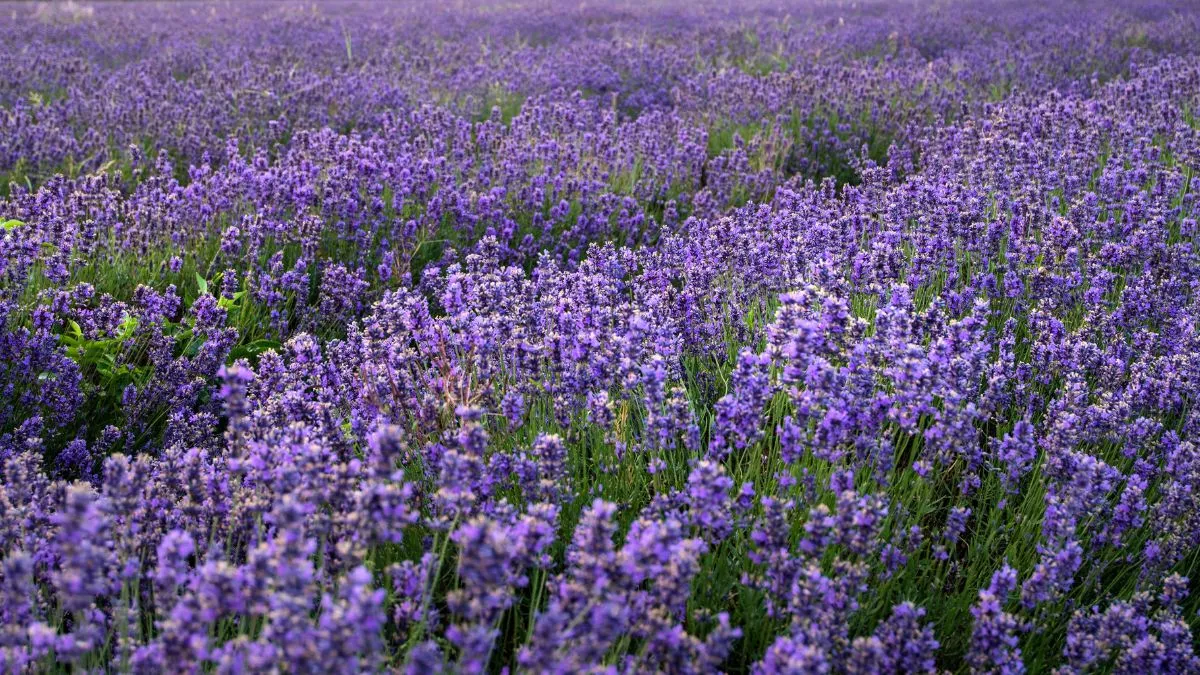Welcome to your guide on how to grow and care for English Lavender in your home garden! Known for its delightful fragrance, stunning blooms, and versatile uses, English Lavender is a must-have plant for any gardening enthusiast. Whether you’re a seasoned gardener or just starting out, this aromatic herb is a beautiful addition to any outdoor space. In this article, we will explore the different types of English Lavender, tips on pruning and propagating, as well as essential care instructions to ensure your lavender thrives year after year. Let’s dive into the world of English Lavender and unlock the secrets to cultivating these lovely plants in your own backyard.
Types of English Lavender
English Lavender, scientifically known as Lavandula angustifolia, comes in a variety of cultivars that offer different sizes and colors. Some popular types include ‘Hidcote,’ with deep purple flowers and compact growth suitable for borders or containers. ‘Munstead’ is another favorite, featuring light purple blooms and a more petite stature ideal for edging pathways.
For those looking to add a touch of silver to their garden, ‘Silver Mist’ provides silvery foliage alongside lavender flowers. If you prefer a splash of pink, consider ‘Rosea,’ which offers delicate pinkish-lavender blooms that stand out in any landscape. Each type of English Lavender brings its unique charm and characteristics, allowing you to create diverse visual appeal throughout your garden beds or pots. Explore the various types available and choose the ones that best suit your gardening style and preferences. Your property’s landscape has the potential to be something special – you just need help bringing it to life. And that’s where Michaelangelo’s landscaping comes in.
Pruning
Pruning is a crucial step in caring for your English lavender plants. It helps promote healthy growth, maintain shape, and encourage more blooms. To prune your lavender effectively, you’ll need sharp garden shears or scissors to avoid damaging the plant.
When pruning your Lavandula Angustifolia, do it in early spring before new growth appears. Start by cutting back about one-third of the plant’s height to stimulate new growth from the base. Be mindful not to cut into old wood as this can hinder regrowth.
Remove any dead or yellowing foliage as well as spent flower stems during pruning. This will improve air circulation around the plant and prevent disease. Additionally, shaping your lavender into a rounded mound helps it thrive and look aesthetically pleasing in your garden.
Regularly trimming off excess growth throughout the growing season can also help keep your Lavandula Angustifolia bushy and full of life.
Propagating English Lavender
Propagating English Lavender is a rewarding way to expand your garden without having to purchase new plants. One common method of propagation is through stem cuttings. To propagate Lavandula Angustifolia through cuttings, choose healthy stems from the current season’s growth. Cut these stems at a 45-degree angle and remove any lower leaves to expose the nodes.
Next, dip the cut ends in rooting hormone to encourage root development. Plant the cuttings in well-draining soil or a mix of sand and perlite to prevent waterlogging. Keep the soil consistently moist but not soggy, and place the container in a warm, sunny location.
With proper care and attention, your lavender cuttings should develop roots within a few weeks. Once roots have established themselves, you can transplant them into larger pots or directly into your garden bed for beautiful blooms year after year!
Potting and Repotting Lavandula Angustifolia
When it comes to potting English lavender, choosing the right container is key. Opt for a well-draining pot with plenty of drainage holes to prevent waterlogging, as lavender plants dislike soggy roots. Use a sandy, well-aerated soil mix to ensure proper drainage and root health.
Repot your Lavandula Angustifolia plant every 2-3 years or when you notice overcrowding in the current pot. Gently remove the plant from its current container and inspect the roots for any signs of rot or disease before transferring it into a slightly larger pot with fresh soil.
After repotting, water your lavender thoroughly but allow the soil to dry out between watering sessions to prevent root rot. Place the newly potted plant in a sunny location where it can receive at least 6 hours of sunlight daily.
Regularly check on your potted English lavender for any signs of pests or diseases and address them promptly to keep your plant healthy and thriving.
Overwintering
During the winter months, it’s crucial to provide proper care for your English lavender plants to ensure their health and survival. Overwintering is essential in colder climates where frost can pose a threat to these delicate plants.
To prepare your English lavender for winter, start by trimming back any dead or overgrown branches but avoid cutting into the woody stems as this can harm the plant. Next, mulch around the base of the plant to protect its roots from freezing temperatures.
If you’re growing English lavender in containers, consider moving them to a sheltered area like a garage or porch during the coldest months. Make sure they still receive adequate sunlight even indoors.
Water your lavender sparingly during winter as overwatering can lead to root rot. Monitor soil moisture levels and only water when necessary. With proper care and protection, your English lavender should survive through winter and thrive again come springtime.
Common Plant Diseases
English lavender is a relatively hardy plant but, like any other, it can fall victim to common plant diseases. One of the most prevalent issues is root rot, which occurs when the soil is too wet and causes the roots to decay. To prevent this, ensure proper drainage in your garden or pots.
Another disease that can affect English lavender is downy mildew. This fungal infection thrives in humid conditions and appears as yellow patches on the leaves. It’s essential to water your plants at their base and avoid overhead watering to reduce humidity around the foliage.
Powdery mildew is another culprit that might plague your English lavender. This powdery white substance on leaves stems from high humidity levels combined with poor air circulation. To combat this, space out your plants adequately and prune them regularly.
Keeping an eye out for these common plant diseases and taking preventive measures will help keep your English lavender healthy and flourishing in your garden!
How to Get English Lavender to Bloom
To ensure your English lavender produces beautiful blooms, proper care is essential. Start by planting your lavender in well-draining soil and placing it in a sunny location. Lavender thrives in full sun, so aim for at least six hours of sunlight daily.
Regular pruning is crucial to encourage blooming. Deadhead spent flowers regularly to promote new growth and more blooms throughout the season. Be sure not to cut into old wood when pruning as this can hinder future flowering.
Proper watering is key – avoid overwatering as this can lead to root rot. Allow the soil to dry out between watering sessions but don’t let it become bone-dry either. A good rule of thumb is about an inch of water per week during the growing season.
Consider applying a balanced fertilizer once or twice a year in early spring or late winter to provide necessary nutrients for blooming success. With these tips, you’ll soon be enjoying the vibrant and fragrant blooms of your English lavender plant!
Temperature and Humidity
English lavender thrives in full sun and well-draining soil. When it comes to temperature, this herb prefers a warm environment with temperatures ranging between 60-70°F during the day. In colder climates, grow English lavender in containers that can be brought indoors during winter.
Humidity levels are also crucial for the health of your English lavender plant. Lavender plants do best in dry conditions with low humidity levels. Excessive moisture in the air can lead to root rot and other fungal diseases, so ensure good air circulation around your plants.
If you live in a humid area, consider planting English lavender in raised beds or adding sand to the soil for better drainage. Monitor humidity levels regularly to prevent issues before they arise and keep your beloved lavender thriving.
Remember, maintaining optimal temperature and humidity conditions will help your English lavender plant flourish and produce those fragrant blooms you love!
Fertilizer
When it comes to fertilizing your English lavender plants, less is more. These hardy beauties don’t require much feeding to thrive. In fact, over-fertilizing can do more harm than good.
Choose a balanced fertilizer with low nitrogen levels to avoid encouraging excessive leaf growth at the expense of blooms. A 5-10-10 NPK ratio works well for most lavenders.
Apply the fertilizer sparingly in early spring when new growth begins, and then once again after the first bloom cycle. Be sure to water the plants before and after applying fertilizer to prevent burning their roots.
Organic options like compost or aged manure are also suitable choices for feeding your lavender naturally. Remember, moderation is key when it comes to fertilizing these aromatic wonders!
Bloom Months
English lavender typically blooms from late spring to early summer, depending on the specific variety and growing conditions. The bloom months can vary slightly based on the region and climate in which you are cultivating your lavender plants.
In regions with milder winters, English lavender may start blooming as early as May, while in cooler climates, you might start seeing blooms closer to June. The blooming period is a magical time when vibrant purple hues adorn your garden and fill the air with their delightful fragrance.
During this time, it’s essential to monitor your lavender plants regularly for any signs of wilting or dehydration, especially during hot summer months. Adequate watering and proper sunlight exposure will help prolong the blooming season of your English lavender.
As the flowers begin to fade towards the end of summer, it’s crucial to deadhead them promptly to encourage new growth and ensure a healthy plant for seasons to come. By understanding the typical bloom months of English lavender and providing proper care during this period, you can enjoy a lush garden filled with fragrant blossoms year after year.
What Do English Lavender Blooms Look and Smell Like?
English lavender blooms are a sight to behold in any garden. The flowers of English lavender, also known as Lavandula angustifolia, are typically small and fragrant with a vibrant purple hue that can range from pale lilac to deep violet. Their slender spikes rise elegantly above the plant’s silvery-green foliage, adding a touch of charm and beauty.
The scent of English lavender blooms is unmistakable – sweet, floral, and herbaceous all at once. When you brush against the blooms or crush them between your fingers, they release a calming aroma that is often described as earthy and slightly woody with hints of freshness. This delightful fragrance has made English lavender a popular choice for aromatherapy products, perfumes, and sachets.
The appearance and fragrance of English lavender blooms make them not only visually appealing but also sensory delights that can enhance your garden space in both appearance and aroma.
Caring for English Lavender After It Blooms
After the beautiful blooms of your English lavender have faded, it’s essential to continue caring for the plant to ensure its health and longevity. Once flowering is over, you should prune back the spent flower stems to encourage new growth. This process not only helps maintain the plant’s shape but also promotes more flowers in the following blooming season.
Regular watering is crucial post-bloom, especially during hot and dry periods. Make sure not to overwater as English lavender prefers well-draining soil. Additionally, consider giving your plant a light application of balanced fertilizer in late spring or early summer to support its growth.
As fall approaches, reduce watering gradually to prepare the plant for winter dormancy. Mulching around the base can help insulate roots during colder months. Remember that proper care after blooming sets the stage for a healthy and vibrant English lavender display in future seasons.
Deadheading English Lavender Flowers
To keep your English lavender looking its best and encourage new growth and blooms, deadheading is a crucial maintenance task. Deadheading involves removing spent flower heads from the plant. This process not only helps improve the overall appearance of your lavender but also prevents it from going to seed prematurely.
When deadheading English lavender flowers, use clean pruning shears or scissors to snip off the faded blooms just above a set of healthy leaves. It’s essential to make clean cuts to avoid damaging the plant. By regularly deadheading your lavender throughout the blooming season, you can extend its flowering period and promote continuous growth.
Remember that timing is key when deadheading. Wait until at least half of the flower stems on your lavender have finished blooming before you start removing spent flowers. This allows for maximum bloom time while preventing premature seed production.
Deadheading may seem like a small task, but it plays a significant role in maintaining the health and beauty of your English lavender plants throughout the growing season.
Conclusion
Growing English lavender in your home garden can be a rewarding and aromatic experience. By following the tips on pruning, propagating, potting, overwintering, and caring for this fragrant herb, you can enjoy its beautiful blooms and soothing scent throughout the year.
Remember to provide your English lavender plants with well-draining soil, plenty of sunlight, and proper air circulation to ensure their health and vitality. With a little care and attention, you can create a stunning display of vibrant purple flowers that will attract bees and butterflies while adding a touch of elegance to your garden or indoor space.
So go ahead and bring some English lavender into your life – not only will it enhance the aesthetic appeal of your surroundings but also offer numerous benefits for both mind and body. Happy gardening!









